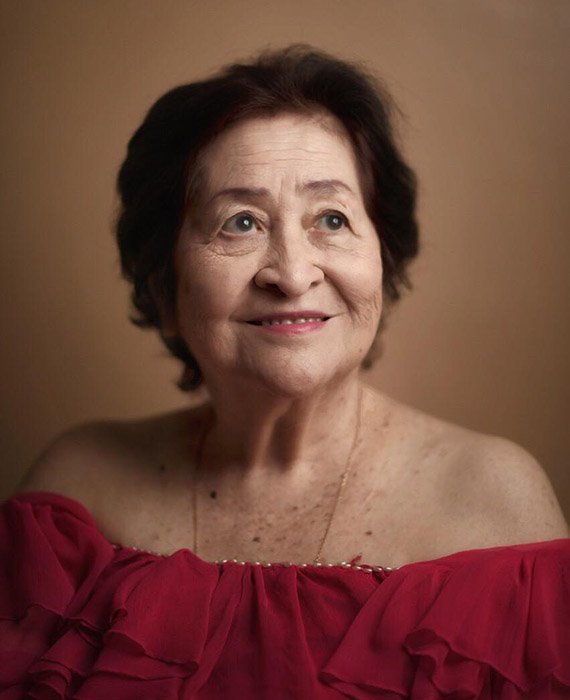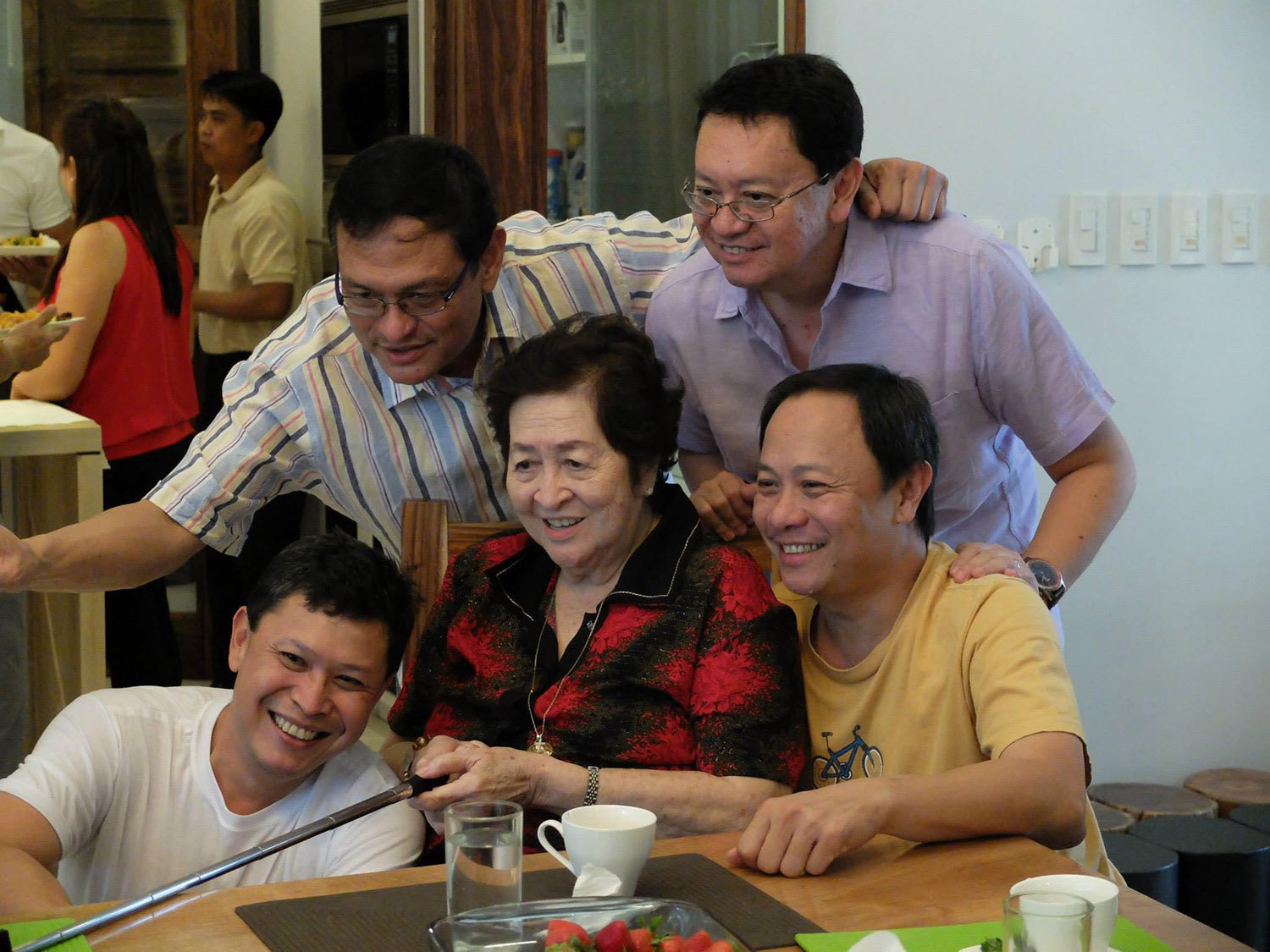Imang Ninay Baron Cooks Feasts That Taste Like Love
/Imang Ninay Baron, 92, caterer, has devoted her life cooking Kapampangan food that tastes like love. (Photo from Tinette Baron Romero)
Tucked away in the town of La Paz, Tarlac, some 131 kilometers north of Manila, is the Baron Poultry Farm, where Catalina Baron Panlilio and the late Deogracias Baron raised their nine children, and where cooking good food took center stage in their lives.
Recently, I chatted with one of Imang Ninay’s daughters, Tarlac-based Tinette Baron Romero, a restaurateur and caterer. She reminisced about their holiday traditions and her mother’s cooking.
“Tatang was one of 11 siblings, and all the Baron women were kusineras. On the Panlilio side, Ima was one of nine siblings, all the girls cooked,” Tinette said.
She described their Noche Buena up to Christmas Day spent in Manila with their clans. In true Kapampangan tradition, every dish was exceptional and meticulously prepared by each Baron or Panlilio sister.
The Christmas Eve Noche Buena table groaned with Ensaymadas, buttery brioche with grated Queso de Bola; creamy Chicken Pasta cooked with chorizos, bacon, pimientos, and parmesan cheese; and tender Lengua Servillana, ox tongue cooked in mushroom gravy.
A typical party spread of Kapampangan cuisine at the Baron-Panlilio holiday events (Photo from Tinette Baron Romero)
Imang Ninay made one of her specialties -- Chicken Asado, chicken with liver and gizzards cooked in asado sauce; as well as her irresistible Tocino del Cielo, heavenly bite-sized custard treats with caramel topping.
Christmas Day lunch with the Baron clan consisted of Bulalo (beef shank soup) with all its tendons; fried hito (catfish) with accompaniments of buru or balao-balao (salty fermented shrimp or fish), wrapped in fresh mustard leaves; assorted steamed fresh vegetables; Sotanghon na Puti (glass noodles); Jeweled Prawns, ground meat and chestnuts wrapped in bitter melon and deep-fried. The famous Chicken Asado of Imang Ninay, made its appearance, plus her Kilayin, pork belly with innards, cooked adobo-style with vinegar and garlic. The Kilayin had to be eaten with rice and latundan saging (ripe banana). The magnificent meal ended with the family’s Sans Rival, crisp layers of meringue baked with chopped cashews, topped with a rich buttercream frosting.
Christmas dinner was with the Panlilio clan. There was a roasted calf, carved on the spot; a hefty Lechon, for no Filipino party is without it; Roast Turkey with embutido stuffing plus a thick gravy; decadent Prawns Thermidor with fragrant roasted chestnuts; and fresh fruits.
“Food was a big part of our childhood, for us five sisters Teresa, Josefina, Catalina, Agnes, and myself, and my four brothers Gerry, Jun, Tito, and Arthur, “Tinette said.
Imang Ninay Baron with her five daughters who all love to cook: Teresa, Josefina, Catalina, Tinette, and Agnes (Photo from Tinette Baron Romero)
“All of us cook, and so do my brothers.”
Food was a feast, even for everyday meals.
Imang Ninay Baron with her four sons, business entrepreneurs who cook: Gerry, Jun, Tito, and Arthur. (Photo from Tinette Baron Romero)
“Ima prepared tuyo (dried fish) hinimay (shredded and deboned), with tomatoes, and fried garlic rice. And only when we were seated were the eggs cooked, scrambled, sunny side up, or over easy.”
“Ima shredded crabs, then returned it to its shell, to be served. Sawsawan (dipping sauces) were tidtad a manga (chopped green mango) with begucan (bagoong or fermented shrimp) aslam (shrimps) with begucan; calamansi with begucan.”
“During talangka (small crablets) season, she made buru (crab paste). She showed us how to prepare it, delicately adding the salt, and shaking the talangka. After hours of extracting the crab paste, she mashed the salty talangka over our steamed rice, drizzled with calamansi.”
“Imang Ninay’s painstaking food preparation — attention to detail, and the love that flows in every sauce and slice — has been nourishing her nine children, 29 grandchildren, and soon, 14 great grandkids.”
Tinette is thankful her mother Imang Ninay taught her the specialty Asadong Manok. It was cooked for hours in tomatoes, soy sauce and calamansi until tender. Then Imang Ninay deboned it, and served it looking like a whole chicken, with a special gravy.
“It was served with garlic rice, or as palaman (filling) for pan de sal (bread roll).” Tinette said. “I serve it Paella-style, mixed with rice, and the chicken on top.
“The Pinaupong Manok Ima created was our family’s version of fried chicken. My parents had nine children to feed, so, they used old layer chickens which were hard to sell because they had tough meat and took time to cook. “
The chicken was boiled for hours, with salt as the sole seasoning, until the chicken reached its most tender point, falling off the bone, the broth reduced. Using the chicken’s own rendered fat, Ima fried the it until crisp.
“Pinaupong Manok is also a holiday dish. Our relatives request it,” Tinette said.
Food is Imang Ninay’s language of love. Food, family, and faith keep them together. Imang Ninay’s painstaking food preparation -- attention to detail, and the love that flows in every sauce and slice -- has been nourishing her nine children, 29 grandchildren, and soon, 14 great grandkids.
Every day meals at the Baron family home is a feast.(Photo from Tinette Baron Romero)
Imang Ninay, or Catalina Lazatin Panlilio Baron, now 92, stays in Tarlac but she will definitely be present for the family reunion in Manila in December. And like always, there will be luscious, moan-after-every-dish, loosen-your-pants-good Kapampangan food.
For the Baron family, nurturing with food is passed on to the next generations. This is what Imang Ninay has taught them. This is what love tastes like.
For Imang Ninay’s Pinaupong Manok recipe, visit: https://www.positivelyfilipino.com/magazine/the-happy-home-cook-pinaupong-manok
Elizabeth Ann Quirino, based in New Jersey, is a journalist, food writer and member of the International Association of Culinary Professionals (IACP). She blogs about Filipino home cooking and culinary travels to the Philippines on her site AsianInAmericamag.com.
More articles from Elizabeth Ann Quirino








